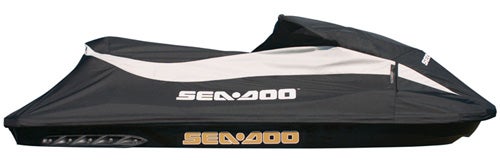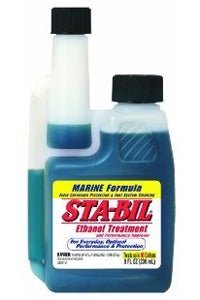How To Properly Store Your PWC Fuel for Winter
Ethanol adds a new wrinkle to winterizing
If you’re a snowboard, ski, or snowmobile enthusiast, winter’s great, but for the diehard PWC fan it’s the end of the road, at least for those who live in all but the warmest climates. That means hanging up the wetsuit, winterizing your craft, and stowing everything away for months on end.
And while most winterizing techniques haven’t changed a lot in recent years, one warrants revisiting — how to properly store any leftover gasoline.
If there is one development that has made fuel storage more difficult, or at least more confusing, it’s the somewhat recent addition of ethanol into much of our nation’s fuel supply. I’ll save the debate over whether the addition even makes sense for another time, but the fact is the stuff is probably present in your current fuel supply, and its presence changes the game for long-term storage. (As well as for everyday use. Many manufacturers now recommend a fuel stabilizer be added to every tank of gasoline, summer or winter.)
 It’s time to put the cover on your PWC and get it ready for winter.
It’s time to put the cover on your PWC and get it ready for winter.Previously, conventional wisdom often dictated that topping off your fuel tanks was the way to go to get through the months of hibernation. Filling completely minimized the amount of fumes that could build within tanks (both in your craft and portable cans) and reduced the presence of condensation. Add that fuel stabilizer to be on the safe side and keep things fresh and you were good to go.
 Add a dose of fuel stabilizer to help prevent engine corrosion over the winter months.
Add a dose of fuel stabilizer to help prevent engine corrosion over the winter months.The problem with ethanol, however, is that it’s famous for absorbing moisture. Moisture can lead to water collecting in your tank, which will lean out the fuel mixture. One reason cars don’t have many problems is that they go through a lot more fuel than a PWC or boat; their supply is always relatively fresh. Their environment is also much more dry. But leave that same automobile’s fuel in your stored PWC over the winter and you may have problems. It can, and most likely will, attract moisture. There’s also the fact that ethanol is a solvent. It will work on any sludge or gunk at the bottom of your tank all winter long, and maybe send it pulsing through your fuel lines when you start your craft up in the spring.
On older craft you may also find that ethanol fuels will damage plastic and rubber hoses and fittings, making them dry, brittle, and prone to breakage, a problem that may only be exaggerated by winter’s long term period of inactivity.
Currently, opinions differ on the best course of action. With PWC fuel tanks being relatively small, it’s possible — and to many experts — even advisable to simply drain tanks and eliminate the presence of ethanol entirely. Toss that fuel in your car and use it up, rather than let it sit. To those who have already had ethanol problems, it’s quite possibly the best solution.
Still, the possibility exists that explosive fumes can build up in an empty tank. That’s why many fire protection agencies still suggest any tanks be topped off during storage rather than drained.
If you follow this latter route, fuel stabilizer is an absolute must. Add it, and run some of that stabilized fuel through your engine before your final shutdown. Stabilized gasoline should remain fresh throughout the storage period, enabling you to use it again come spring. Stabilized fuel should also prevent the possibility of corrosion within your engine, and resist phase separation, a nasty possibility of ethanol fuels where the fuel reaches its saturation point with water and actually separates into individual gas, water, and ethanol components.
Related Reading
Personal Watercraft Winter Storage Tips
Cold Weather PWC Riding Tips
How To Choose a PWC Boat Cover
Simple PWC Makeovers
Curious About Your Engine’s Health? Check Your Spark Plugs
Get PersonalWatercraft.com in your Inbox!
Like PersonalWatercraft.com on Facebook
Comments
Most Popular

2025 Yamaha JetBlaster PRO 2-Up Review

2024 Kawasaki Jet Ski STX 160X Review

Remembering the Sea-Doo XP

Whatever Happened to the Wetbike?

2025 Yamaha JetBlaster Review












 Your Privacy Choices
Your Privacy Choices